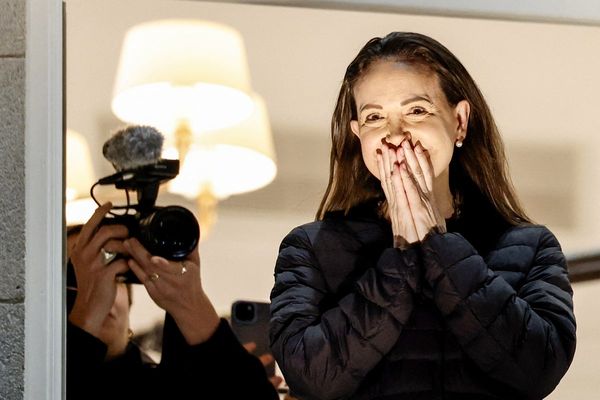
In 2021, Melbourne’s median house price surpassed $1m, after a decade of rising by an average of more than $70,000 a year.
It was Australia’s second most expensive housing market, after Sydney. The next year, prices began to fall.
The city’s median house price is still $10,000 lower than it was at its peak, data released by Domain on Thursday showed.
Sign up: AU Breaking News email
While investors say Victoria is a warning to other states, the pricing slowdown has helped more owner-occupiers enter the market.
With more listings and less competition from property speculators helping to make the city more affordable, should the rest of Australia follow suit?
First home buyers get a foot in the door
Melbourne was overtaken first by Canberra and later by Brisbane, where house prices rose nearly $400,000 in the past four years. At $1.083m, a median-priced house in Melbourne is now just $40,000 more expensive than in Adelaide, according to Domain data.
Australia has on average seen soaring property investor activity and slumping first home buyer loans as higher prices and rising interest rates made mortgages less affordable for typical workers as they compete with investors.
But in Victoria first home buyers account for a growing share of home loans while investor activity has been slow to rise, data from the Australian Bureau of Statistics shows.
The state has seen the proportion of first-time buyers inch up in recent years, now accounting for nearly three in 10 home loans, while nationally the number declined.
The rise came as the Victorian government introduced extra land tax for investors, amounting to about $1,300 a year for a property worth $650,000. A levy on platforms such as Airbnb and expanded taxes on vacant properties and land came soon after.
The land tax was explicitly aimed at boosting budget revenues, as Victoria’s debt continued to balloon, but the vacancy levy aimed to bring more homes to market.
Property investment subsequently declined in Victoria relative to the rest of the country as landlords exited the market at growing rates, according to experimental data from Cotality.
Fewer landlords has meant declining rental stock, down from 678,000 in September 2023 to 655,000 in March, with all the losses hitting metropolitan Victoria, according to state active bond data.
Tim Graham, a board member of the Property Investors Council of Australia says this should be “a warning to other states that if you want to discourage investment and have less rental properties, you’re going to have a much bigger rental crisis on your hands”.
Yet investor exit from Victoria to other states has coincided with relatively slower rental price growth, up 33% since the start of 2021 compared to 40% or more in the other major capitals.
Saul Eslake, an independent economist, claims Melbourne’s experience as vindication for the argument against offering lighter tax treatment for property investments.
“This Victorian experience shows that removing tax breaks for property investors may well [reduce] investment [but] that is not necessarily a bad thing,” he said.
Melbourne’s rise in the housing affordability rankings “should be celebrated rather than bewailed”, Eslake says.
Building more homes
Melbourne’s affordability has also been helped by consistently stronger supply growth.
The Grattan Institute’s Brendan Coates argues cheaper and easier development has contributed more to Melbourne’s success than state limits on landlords.
“Melbourne’s got some of the most affordable housing in the country now … And that is in large part a success of building more homes,” he says.
Victoria has consistently built at least 55,000 homes each year for a decade, while other states have struggled.
The Victorian treasurer, Jaclyn Symes, says the government is aiming to further fuel housing development by “reforming planning, unlocking land for homes, and building a decade-long pipeline of new supply”.
More construction has meant more homes on the market in Melbourne, keeping property listings higher in a year where they’ve declined in other cities, according to SQM data.
An exception is Canberra, where above-average home building up to 2023 has led to a similar rise in the number of properties for sale, restraining price growth.
Will greater affordability be short lived?
Lower prices are gradually starting to work against Melbourne’s affordability. Property investor surveys suggest investors are buying back in, chasing bargain deals compared with hotter markets elsewhere.
Projects have become less profitable, meaning building approvals declined in the year to June in Victoria while rising 32% in NSW and more than 10% in South Australia and Queensland.
Falling interest rates and rising incomes will also help more investors and owner-occupiers push up prices around the country, according to Cotality’s head of research, Eliza Owen.
Victoria’s heavier taxes on investors, though, could restrain the market from accelerating at its 2010s pace, Owen says.
“Reducing that investor participation could help to maintain a lower level of price growth across Victoria, so long as it’s coupled with the right supply side responses,” she says.
“For all of the negative attention that additional taxes and charges have drawn from the investor community, there’s clearly an upside here.”
- Additional reporting by Benita Kolovos







